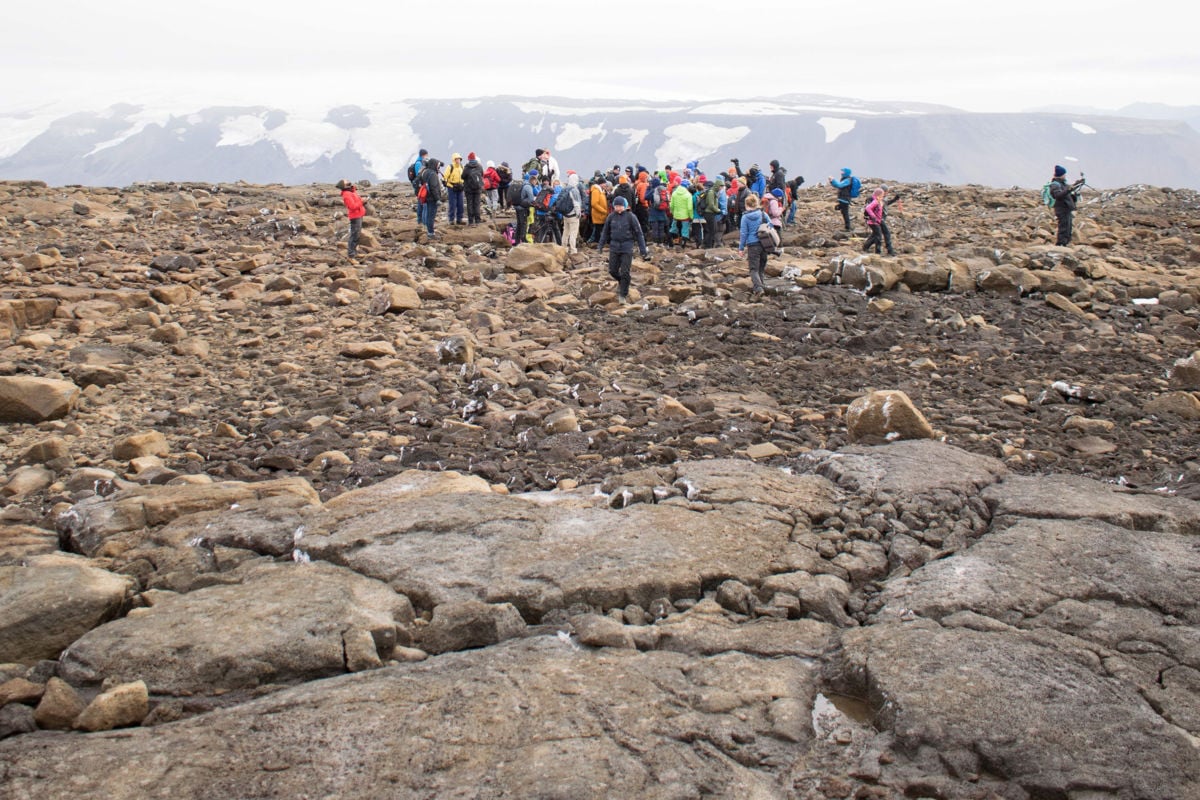Yes, it is generally safe to hike in australia. However, hikers should be aware of potential dangers such as extreme weather conditions, dangerous wildlife, and rough terrain.
It is important to plan ahead, stay informed, and take necessary precautions to ensure a safe and enjoyable hiking experience. Australia offers a diverse range of hiking trails, from coastal walks to mountain treks, providing opportunities to explore the country’s unique landscapes and wildlife.
With proper preparation and caution, hiking in australia can be a rewarding and safe adventure.

Credit: truthout.org
Contents
Risks And Dangers Of Hiking In Australia
Hiking in australia can be a thrilling experience for enthusiastic hikers. With various terrains varying from scenic coasts, dense forests, to rough mountain ranges, australia is a hiker’s paradise. However, hiking in australia can pose certain risks and safety concerns.
In this blog post, we will discuss the major risks and dangers involved in hiking in australia.
Overview Of Different Types Of Risks And Dangers Associated With Hiking In Australia
Hiking in australia is a challenging and exciting adventure that requires careful planning and preparation. Before you plan your hike, it’s important to consider the possible risks and dangers associated with hiking in australia. Here are the main risks and dangers you need to be aware of:
- Weather conditions
- Wildlife
- Terrain and landscape
- Other risks such as getting lost, falling, and health emergencies
Weather Conditions
Australia is known for its extreme weather conditions, which can impact hiking trails. Weather conditions like extreme heat and cold, bushfires, storms, and flooding can pose risks for hikers. Here are some tips to ensure your safety:
- Always check the weather forecast before planning your hike.
- Avoid hiking when heatwaves are predicted.
- If you’re hiking during the summer months, make sure to carry enough water, wear a hat and use sunscreen.
- Be prepared to adapt your hike plans if there is a change in weather conditions.
Wildlife
Australia is known for its diverse wildlife, which can be dangerous if not approached with caution. Wildlife such as snakes, spiders, and crocodiles can be found in certain hiking trails in australia. Here’s how to stay safe when hiking in areas with dangerous wildlife:
- Always stay on designated hiking trails to avoid contact with animals.
- Learn about the different types of wildlife that are found in the area where you plan to hike.
- Carry a first-aid kit that includes a snake bite bandage and first-aid instructions.
- Wear appropriate clothing and footwear, and avoid hiking alone.
Terrain And Landscape
Hiking trails in australia can range from easy to difficult, depending on the terrain and landscape. Here are some tips to ensure your safety when hiking:
- Always choose a hike that is suitable for your fitness level and experience.
- Watch your step when hiking through rocky areas, steep cliffs, and rough trails.
- Carry enough water, food, and a map of the area.
- Make sure to inform someone about your hiking plans, including your destination and expected time of return.
Other Risks
Apart from weather conditions, wildlife, and terrain, there are other risks associated with hiking in australia. These risks include getting lost, falling, and health emergencies. Here are some tips to ensure your safety:
- Carry a fully charged cell phone and a backup battery.
- Stay on marked hiking trails.
- Always inform someone about your hiking plans.
- Wear appropriate clothing and footwear.
Based on statistics from the australian bureau of statistics, 193,500 people are hospitalised each year due to sports and recreational activities, including hiking. By following these simple safety guidelines, you can help prevent accidents and injuries while enjoying the beauty of australia’s hiking trails.
Preparations And Safety Measures For Hiking In Australia
Planning A Hike
Before planning a hike, it is essential to research the trail, check weather conditions and inform someone of your plans. Here are some key points to consider:
- Research the trail before heading; download maps and check the suitability of the hike for your physical fitness.
- Check weather conditions and avoid hiking in extreme conditions.
- Inform someone, such as a family member or friend, of your plan, including your expected start and end times and the trail location.
Essential Items To Bring On A Hike
Hiking requires carrying essential items to ensure your safety and comfort. Here are some of the items you should bring along:
- Maps and gps device to keep you on track.
- First-aid kit that includes bandages, antiseptics, and other medical essentials.
- A sufficient amount of water, snacks, and food to keep you energized throughout the hike.
- Suitable clothing for the prevailing weather condition and temperature.
Preparation For Emergencies
Preparation for emergencies is crucial when hiking in australia, where remote and rugged terrain defines many hiking trails. Here are some recommended safety measures:
- Carry a personal locator beacon (plb) or satellite phone to signal for emergency response when in danger.
- Check the coverage of mobile networks at the destination.
- Have basic first-aid training to handle any injuries.
Tips For Staying Safe During A Hike
When hiking, it is essential always to prioritize safety. Here are some tips to keep you safe during your hike:
- Always hike on marked trails and avoid trying shortcuts in the bush, which could lead to you getting lost.
- Never eat unknown plants, and avoid touching animals that you are uncertain about.
- Avoid hiking alone, especially on less-traveled trails.
Importance Of Physical Fitness
Hiking requires physical fitness, as walking long distances through rough terrain can take a toll on your body. Here are some important tips to keep in mind:
- Adopt a regular exercise routine before the hike to prepare your body adequately.
- Avoid pushing yourself too hard, rest when tired, and take breaks.
- Understand that hiking trails vary in difficulty, and it’s important to choose one that matches your fitness level.
Hiking Destinations In Australia
Australia is a haven for hikers. With its diverse terrain, including coastal trails, national parks, and outback paths, hikers can explore the great outdoors safely. In this blog post, we will look at some hiking destinations in australia that every outdoor enthusiast must explore.
Overview Of Popular Hiking Destinations In Australia
Australia’s trekking routes offer breathtaking views, from rugged mountain peaks to tranquil coastlines. Hikers can choose from a range of options suitable for their experience and skill levels. Here’s what you need to know:
- National parks: Australia is home to numerous national parks that offer miles of well-marked trails and camping sites. These parks feature diverse flora and fauna, waterfalls, and scenic vistas to marvel at.
- Coastal walks: The australian coastline is stunning, with towering cliffs, pristine beaches, and crystal clear waters. Coastal walks can be easy or challenging, depending on the terrain, but are always rewarding.
- Outback trails: For those who seek thrilling adventures, the australian outback offers rugged and remote trails that test hikers’ endurance and survival skills.
Brief Description Of The Landscape, Difficulty Level, And Safety Measures Required For Each Destination
Hiking is an incredible experience, but it can also be dangerous if not approached with care and caution. Every hiking destination in australia has its own unique landscape, difficulty level, and safety measures. Here’s what you need to know about some of the popular hiking destinations:
National Parks:
- Wilsons promontory: Features moderate to challenging trails with stunning views of the bass strait and victoria’s rugged coastline. Hikers must be aware of the possibility of sudden weather changes.
- Blue mountains national park: Offers a range of trails from easy to challenging, with spectacular views of the valley, forests, and waterfalls. Steep cliffs and potentially hazardous terrain make it crucial for hikers to follow safety measures.
Coastal Walks:
- Great ocean walk: Known for its limestone cliff formations and stunning beaches, the great ocean walk in victoria offers a challenging and rewarding coastal hiking experience. Hikers must be prepared for variable weather and pack essentials.
- Bondi to coogee walk: A popular tourist attraction in sydney, the bondi to coogee walk offers a scenic path past stunning beaches, cliffs and rock pools. It’s an easy trail that’s suitable for beginners.
Outback Trails:
- Larapinta trail: A challenging, 233-kilometre trail in the rugged terrain of the west macdonnell ranges, northern territory. Hikers are required to carry all essentials and be wary of potential outback hazards.
- The overland track: The perfect summer trek in tasmania for hikers with moderate fitness. It covers 65 km through the cradle mountain-lake st clair national park and showcases the incredible scenery of tasmania’s world heritage wilderness.
Examples Of Popular Hiking Destinations
Hiking in australia is an unforgettable experience, and these popular trails are a testament to the country’s scenic beauty and diverse landscape. Here are some must-visit destinations every hiker should explore:
- The three capes lodge walk (tasmania)
- The scenic rim trail (queensland)
- The cape to cape track (western australia)
- The thorsborne trail (queensland)
Whether you’re an experienced hiker looking for a challenge or a beginner seeking a scenic stroll, australia has something for everyone. Plan your next hike today, and make memories that will last a lifetime.
Frequently Asked Questions On Is It Safe To Hike In Australia
Is It Safe To Hike In Australia?
Yes, hiking in australia is safe as long as hikers take necessary precautions such as carrying enough water, wearing appropriate clothing, and being aware of their surroundings.
What Are The Dangers Of Hiking In Australia?
The most common dangers of hiking in australia are heat exhaustion, dehydration, snake bites, spider bites, and getting lost. Hikers should take precautions to avoid these dangers.
How Can I Prepare For A Hike In Australia?
To prepare for a hike in australia, hikers should research the trail, check the weather, wear appropriate clothing and shoes, carry enough water and food, and let someone know their plan.
What Should I Do If I Encounter A Snake While Hiking In Australia?
If you encounter a snake while hiking in australia, give it plenty of space and do not try to approach or touch it. Slowly and calmly move away from the snake and do not turn your back on it.
Are There Any Hiking Trails In Australia Suitable For Beginners?
Yes, there are many hiking trails in australia suitable for beginners, such as the bondi to coogee coastal walk in sydney and the mount lofty summit trail in adelaide. Hikers should still take necessary precautions and research the trail beforehand.
Conclusion
After reading this article, it is clear that hiking in australia can be safe if proper precautions are taken. It’s important to always check the weather, bring enough water and snacks, and let someone know where you are going and when you plan to return.
Researching the trail beforehand and being prepared for different scenarios can also make a difference in having a safe and enjoyable hike. While there are risks associated with the australian wilderness, such as snakes and extreme weather conditions, being aware and cautious can greatly reduce the likelihood of any accidents.
Overall, hiking in australia can offer incredible experiences and breathtaking views, but safety should always be the top priority. With the right preparation and mindset, anyone can enjoy the beautiful trails and natural landscapes that australia has to offer.
Hi, I am Michael B.McMahon. I am a professional Hiker, Traveler, Climber & Mountainer. I love to travel a lot. I describe my all experience in this blog. I visit a lot of places. I hope my all article helpful everyone. Enjoy It




